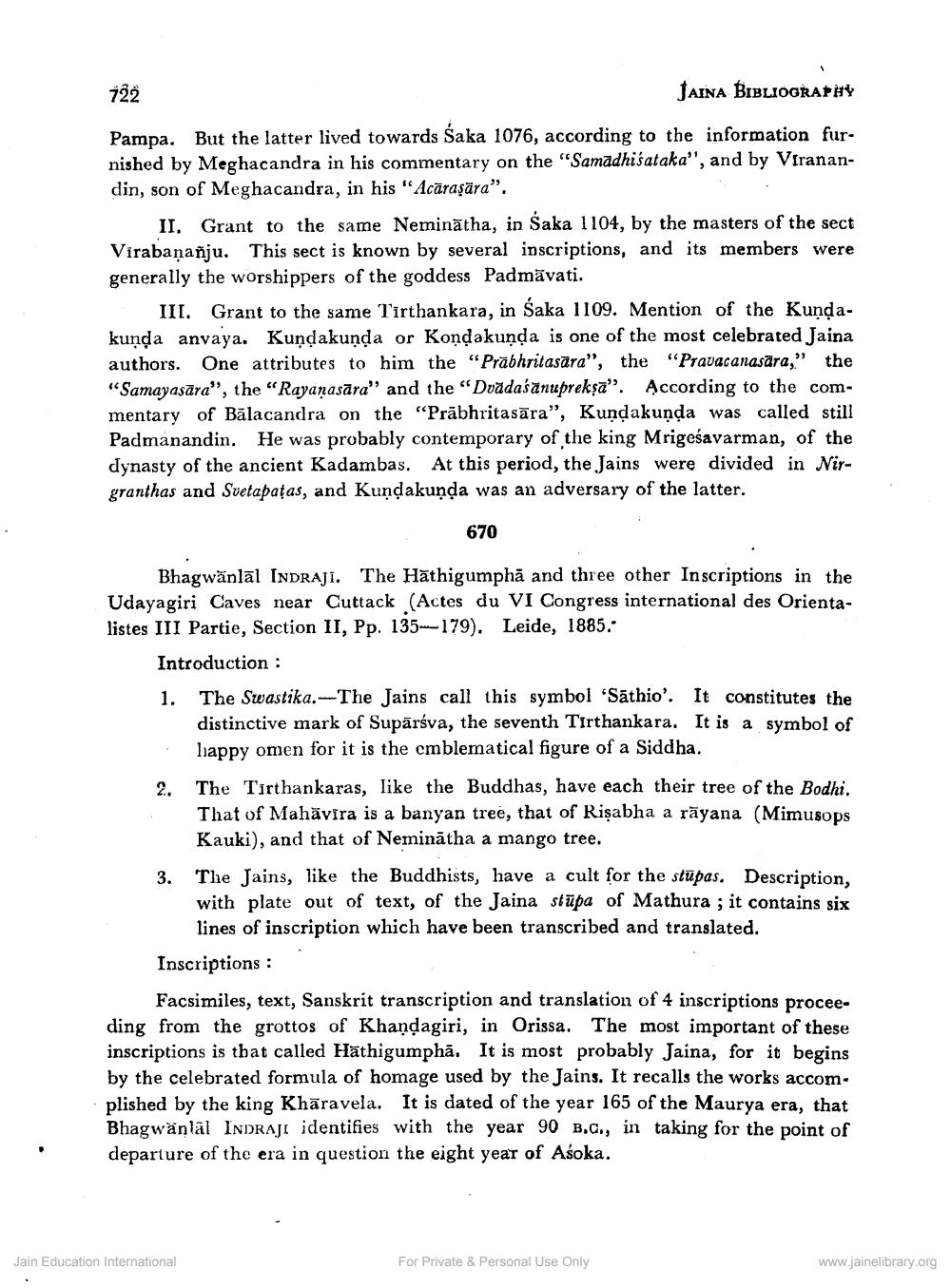________________
722
JAINA BIBLIOGRAPHY
Pampa. But the latter lived towards Saka 1076, according to the information furnished by Meghacandra in his commentary on the "Samadhisataka'', and by Viranandin, son of Meghacandra, in his "Acaraşara”.
II. Grant to the same Neminātha, in Saka 1104, by the masters of the sect Virabaņañju. This sect is known by several inscriptions, and its members were generally the worshippers of the goddess Padmavati.
III. Grant to the same Tirthankara, in Saka 1109. Mention of the Kundakunda anvaya. Kundakunda or Kondakunda is one of the most celebrated Jaina authors. One attributes to him the "Prābhritasära", the "Pravacanasāra,” the “Samayasāra”, the “Rayaņasāra" and the “Dvādaśānuprekşa". According to the commentary of Bālacandra on the "Prābhritasāra", Kundakunda was called still Padmanandin. He was probably contemporary of the king Mrigeśavarman, of the dynasty of the ancient Kadambas. At this period, the Jains were divided in Nirgranthas and Svetapațas, and Kundakunda was an adversary of the latter.
670
Bhagwänlāl INDRAJI. The Hăthigumphā and three other Inscriptions in the Udayagiri Caves near Cuttack (Actes du VI Congress international des Orientalistes III Partie, Section II, Pp. 135.-179). Leide, 1885:
Introduction : 1. The Swastika.-The Jains call this symbol 'Säthio'. It constitutes the
distinctive mark of Supārsva, the seventh Tirthankara. It is a symbol of
happy omen for it is the emblematical figure of a Siddha. 2. The Tirthankaras, like the Buddhas, have each their tree of the Bodhi.
That of Mahävira is a banyan tree, that of Risabha a rāyana (Mimusops
Kauki), and that of Neminātha a mango tree. 3. The Jains, like the Buddhists, have a cult for the stūpas. Description,
with plate out of text, of the Jaina stupa of Mathura ; it contains six
lines of inscription which have been transcribed and translated. Inscriptions :
Facsimiles, text, Sanskrit transcription and translation of 4 inscriptions proceeding from the grottos of Khandagiri, in Orissa. The most important of these inscriptions is that called Hāthigumpha. It is most probably Jaina, for it begins by the celebrated formula of homage used by the Jains. It recalls the works accomplished by the king Khāravela. It is dated of the year 165 of the Maurya era, that Bhagwänlal INDRAJI identifies with the year 90 B.G., in taking for the point of departure of the era in question the eight year of Asoka.
Jain Education International
For Private & Personal Use Only
www.jainelibrary.org




